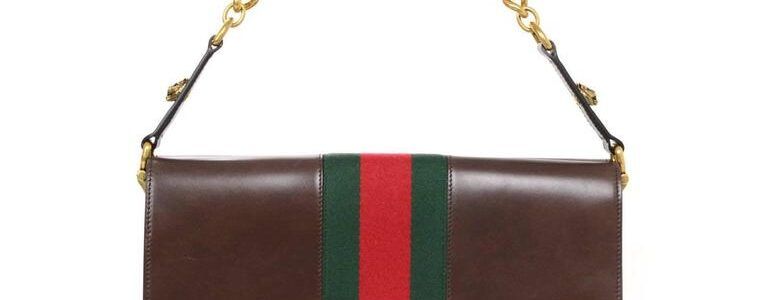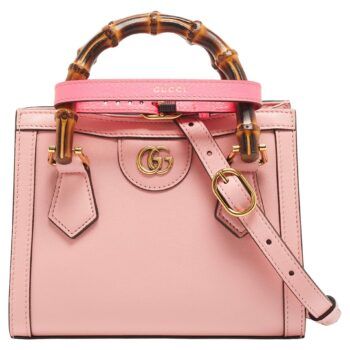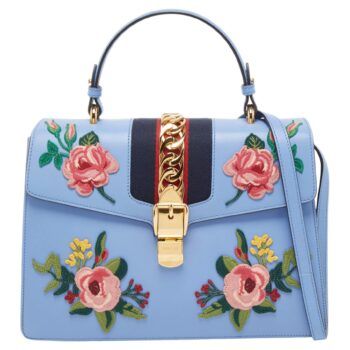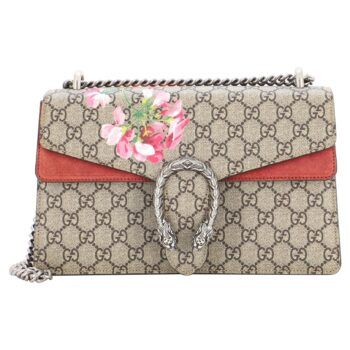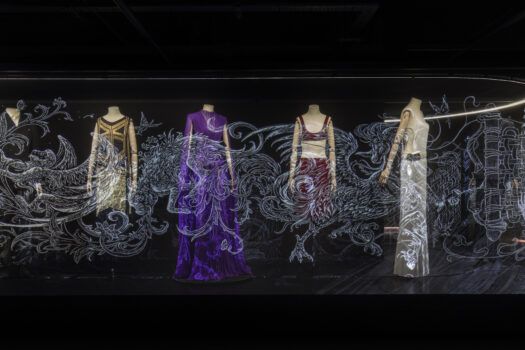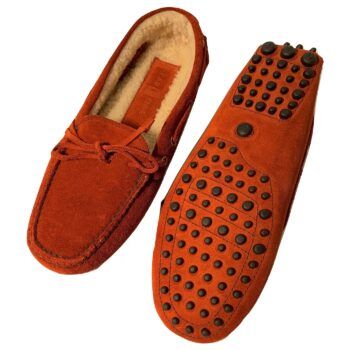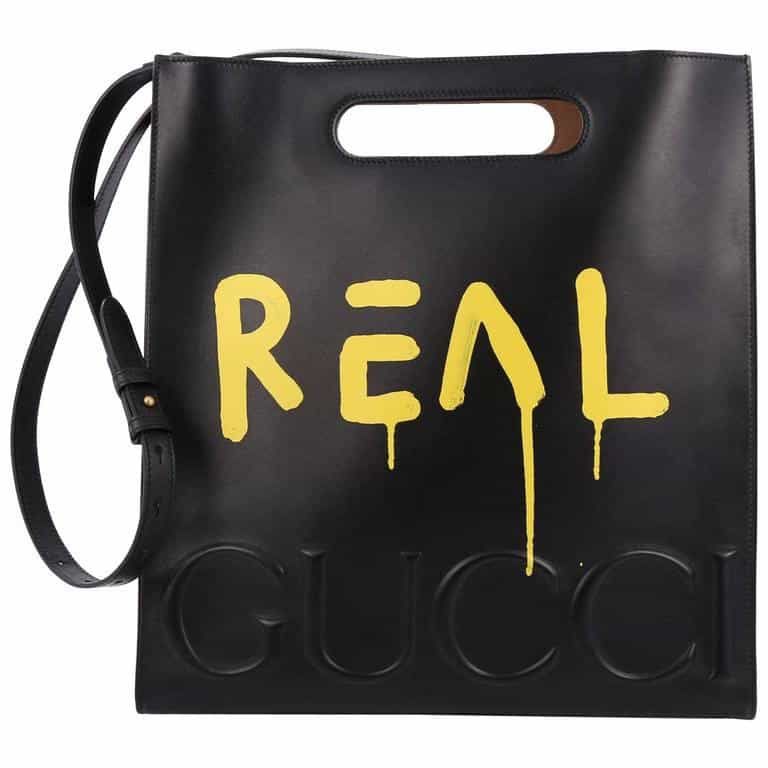
Gucci is “the hot bag right now,” says Alexa Ridolfi, of A Second Chance. “If we have the newer ones, they fly off the shelves.”
In 2015, when the firm’s then-creative director, designer Alessandro Michele, first sent his youthful, fanciful concoctions down the Gucci runway, the century-old brand again became the darling of the style conscious, after years in the doldrums. Now that Sabato de Sarno has succeeded Michele, the fashion world is waiting to see how his vision translates into couture and jewelry collections and, of course, Gucci bags.
But long before Michele and de Sarno, the heritage label was a favorite target of counterfeiters. The firm turned this predilection to creative fodder in its 2016 partnership with Trevor Andrew, aka GucciGhost, who made his name tagging New York City with his spin on the iconic Gucci logo. The collaboration raised some eyebrows — until it raised sales.
“The resulting Real bag [shown above] was a rather clever take on the ever-growing market for counterfeit goods,” says Julie Zerbo, founder and editor in chief of the Fashion Law website. “It’s always interesting to see the law make its way onto the runway because, to be frank, the creative aspects do not exist in a vacuum, completely separate from legal and branding concerns.”
And what about your purchasing concerns? We’ve compiled expert advice on recognizing real Gucci bags, so you don’t wind up with a fake.
Gucci Logo
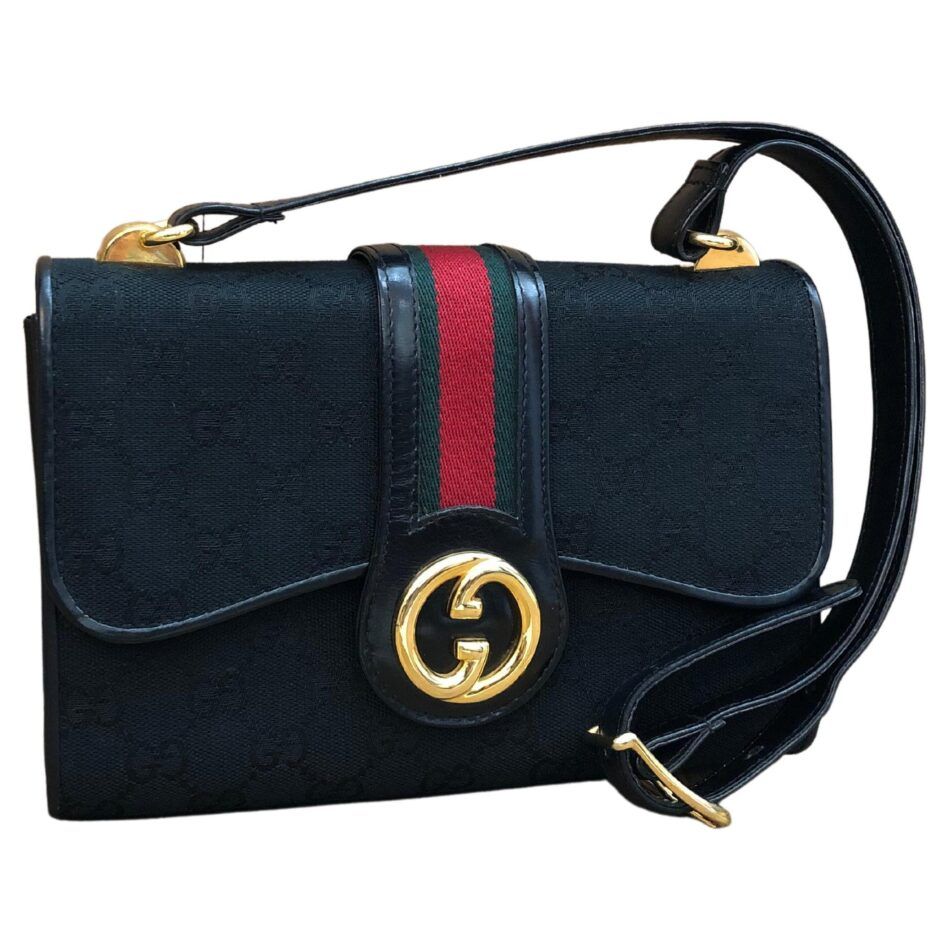
Gucci’s rich, century-spanning history is a tapestry of creativity and innovation. In the course of the brand’s evolution, different logos emerged, each a distinctive reflection of Gucci’s heritage and milestones, influenced by iconic motifs, collaborations and fashion trends. It is a defining element of a real Gucci bag. When considering a purchase, research the logo to determine if it is associated with your bag’s particular style, and use the guide below to check if it displays the correct design details, quality and placement.
Double G Logo
In use from 1992 on, the double G logo is one of Gucci’s most recognizable symbols. Until 2019, the two initials interlocked in a circular design that, on an authentic bag, will be symmetrical. In 2019, Michele altered the logo so that both Gs face right and overlap.
Horsebit Detail
Introduced in 1953, the metallic interlocking horse bits that top Gucci bags and shoes pay homage to the brand’s roots in the equestrian world.
Web Stripe
The green-and-red web stripe that runs vertically through the center of Gucci handbags is another classic symbol of the firm’s equestrian past, inspired by the girth used to attach a saddle to a horse. The cream, red and blue stripes on Sylvie bags are an authentic variation. Whichever colorway is used, the hues should be precise Gucci shades, and the stripes’ borders should never be wavy.
Monogram Print
Introduced in the 1960s — and still found on contemporary Monogram handbags, as well as on vintage accessories and pieces from the house’s fashion collections — the Gucci Monogram is composed of two Gs facing each other, one right side up and the other upside down. The print pattern should be perfectly symmetrical across the entire bag, even when interrupted by a zipper, flap or pocket. Any misalignment or irregular spacing signals a fake.
Controllato Card
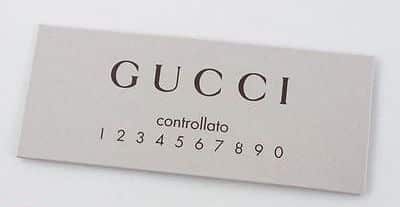
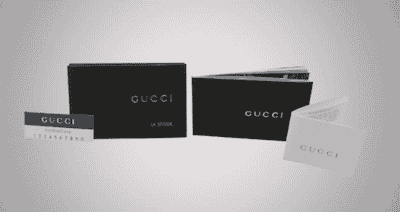
Every genuine new Gucci bag comes with a controllato (Italian for “checked”) card attesting that it was inspected after completion. Its presence, however, does not guarantee that the bag it accompanies is authentic.
Real controllato cards have the Gucci logo in the center above the word controllato in lowercase letters, and below that 10 numbers. But counterfeiters who can copy a leather bag can also duplicate a simple paper tag.
Gucci Tag
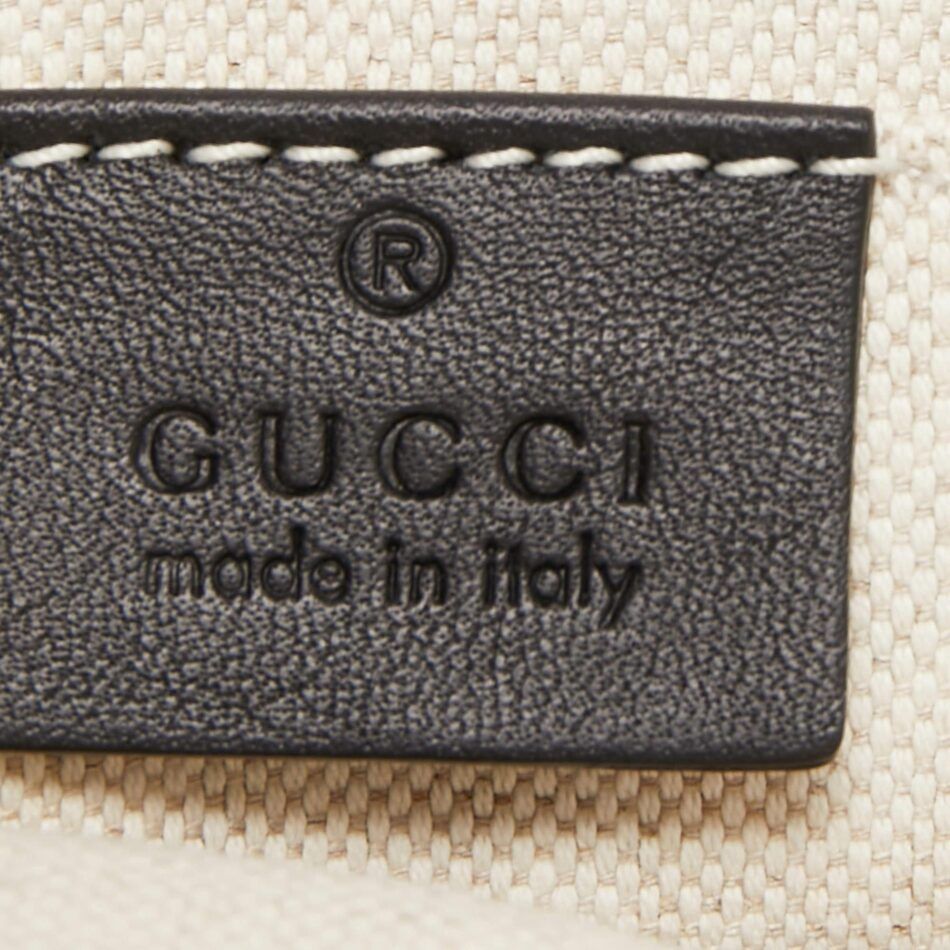
Inside a Gucci bag, there should be a leather tag attached to the middle of the lining on its back side and heat-stamped with ®, “GUCCI” and “made in Italy.” Check the tag of a bag you’re considering carefully for the correct font, spacing, spelling and positioning of the lettering, generally centered.
The stamping itself should be clear and even. A poorly stamped, misaligned or incorrect tag is a telltale sign of a knockoff.
Lining
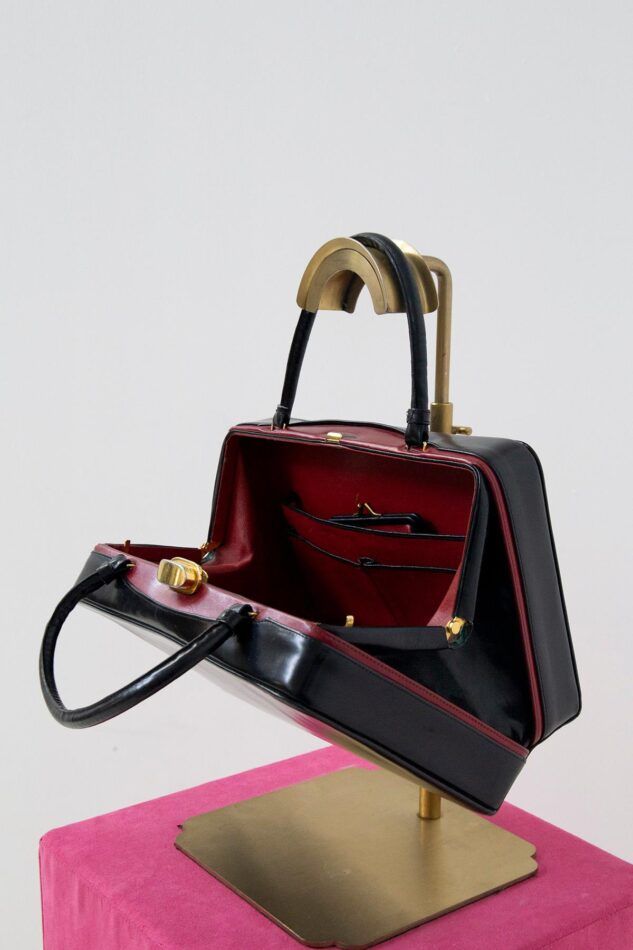
The lining of a genuine Gucci bag will complement its exterior. Check the lining of your potential purchase closely for color and quality. Gucci uses fine materials, sewn expertly into the bag; counterfeiters may cut corners here, hoping you won’t notice.
Serial Number
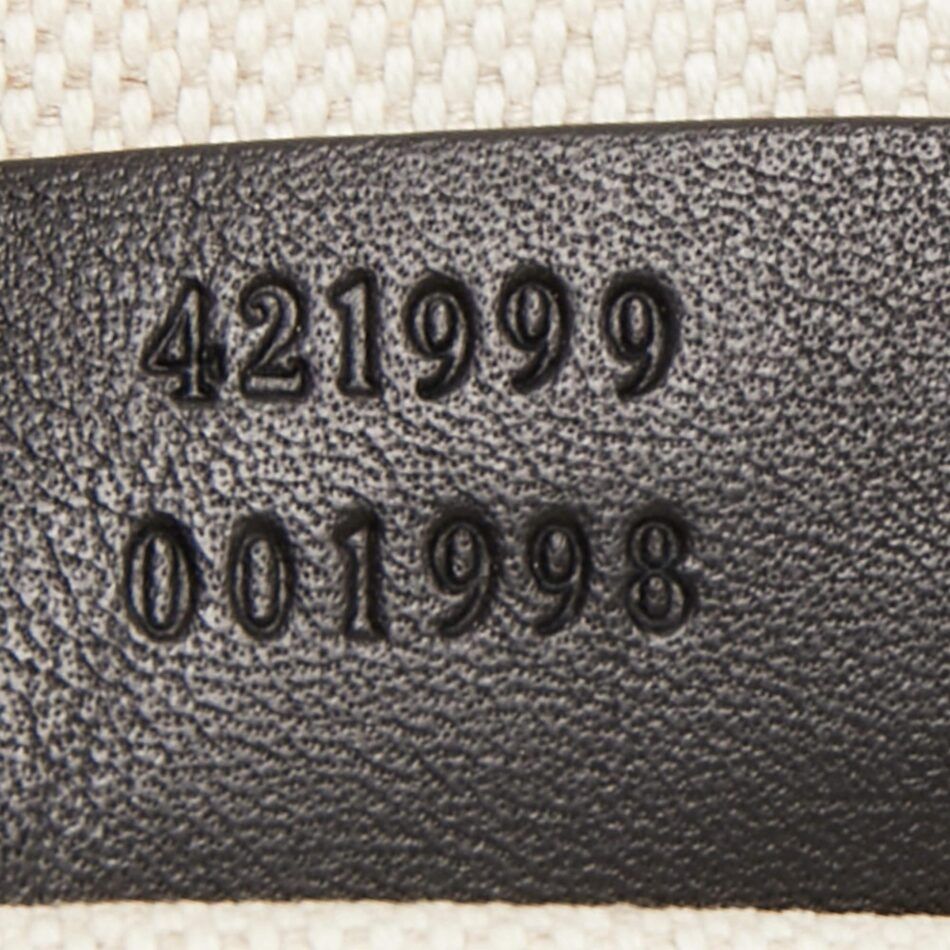
A Gucci bag’s serial number is stamped on the reverse of its leather tag, so if the tag is stitched to the lining on all four sides, you’re looking at a fake. It’s usually made up of two series of digits, for a total of 10 to 13. The two series will generally be positioned one above the other, although they may also appear in one continuous line.
The first set of digits is the style number, and the second is the supplier code. Ridolfi advises that you Google the style number. “If what comes up is a totally different bag,” she says, “that’s a red flag.” For example, she continues, “if you have a hobo, and when you search for that number, you get a wallet, clearly, something is off.”
Because the serial numbers are heat-stamped into the leather, they present a good opportunity to assess quality. As with the tag, if the stamping is uneven, sloppy or hard to read, it’s time to reconsider.
Hardware
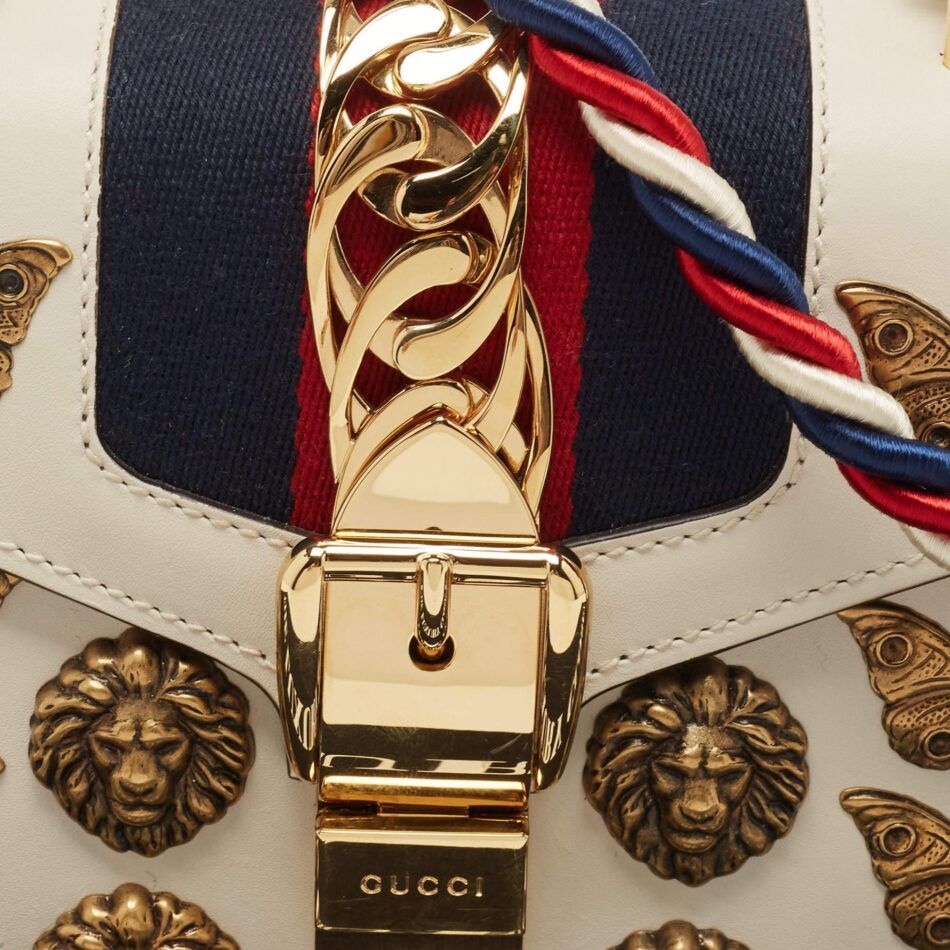
Cheap hardware is a surefire sign of a counterfeit. Real Gucci hardware is made from sturdy solid metal, and most pieces — from the snaps to the zipper — are cleanly engraved with “GUCCI.” Zippers, buckles and locks should all match in the color and quality of the metal used. Mismatched hardware points to a counterfeit.
Fake hardware may also be lightweight, chipped, flaked or even rusted. Restorers are extremely careful with real Gucci hardware. “You would never want to put real Gucci hardware on a fake bag,” says Anthony “Tony” Rago, of Rago Brothers Shoe and Leather Repair.
Zippers
Zippers on authentic Gucci bags operate smoothly and come with sturdy, well-crafted pullers engraved with “GUCCI.” The zippers of counterfeit bags may lack the branding, get stuck or require effort to slide.
Locks
Examine the lock’s design to make sure it aligns with authentic Gucci styles and finishes. Whether it’s a twist or piston lock, the metal should be high-grade, with a consistent finish. Look for a sharp, clear logo, with letters that are evenly spaced. Locks on real Gucci bags are made with an exacting level of precision and should close and open function smoothly.
Bamboo
The use of bamboo for handles and locks originated after World War II, when leather and metal were in short supply. In 1947, designer Guccio Gucci (whose initials inspired the Double G logo) used the incredibly durable material for the first time in his Gucci Bamboo bag.
Since then, Gucci bags with bamboo top handles and turn-lock closures have completed the looks of celebrities from Ingrid Bergman to Princess Diana to Harry Styles. To this day, expert artisans shape, lacquer and toast all bamboo parts by hand to attain a perfectly glossy finish.
Leather
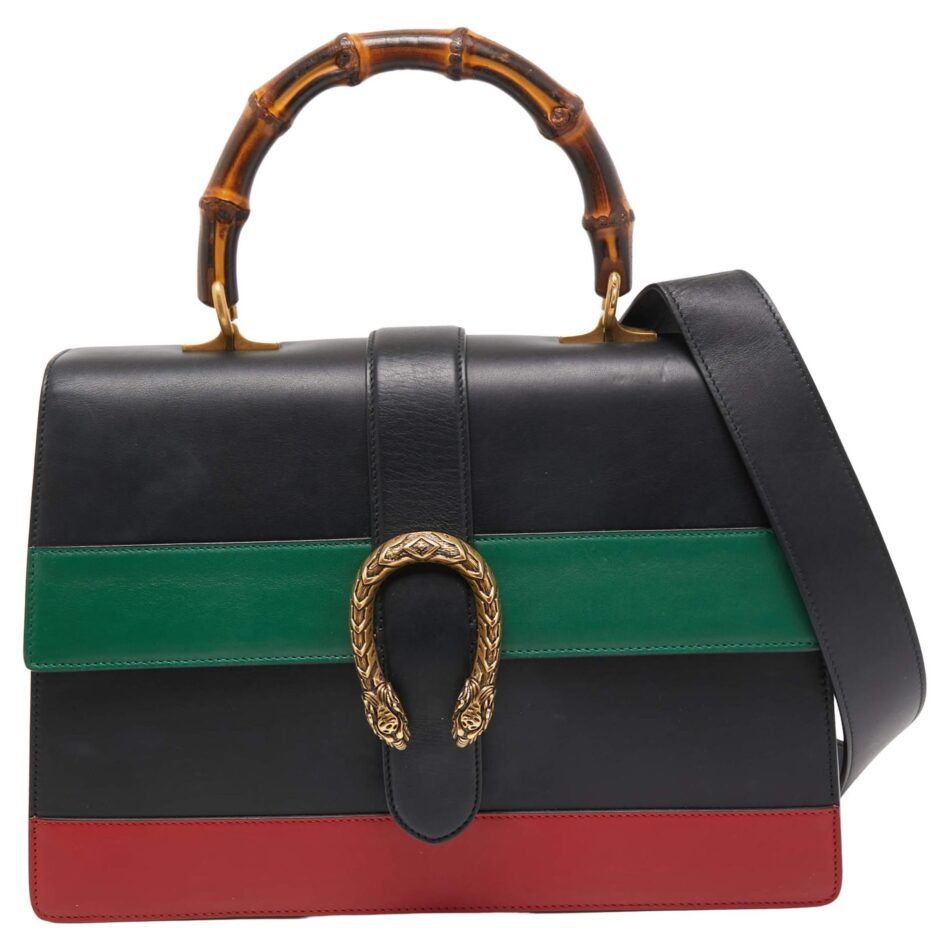
Gucci is renowned for employing only the finest materials, and that is particularly true of the leather it uses for its handbags. The quality of a bag’s leather is a key factor differentiating a real Gucci bag from a fake.
The leather of genuine Gucci bags has a luxurious look, a soft and supple feel and a distinctive scent. Masterful tanning and dyeing processes ensure that it stands up well to wear and retains its rich color.
The leather of an authentic vintage Gucci bag may have a patina but should be in excellent condition, with the same luxe look and feel as the material of a newer one. If the bag you’re considering is made from what appears to be less than the finest leather, it’s a copy.
Stitching
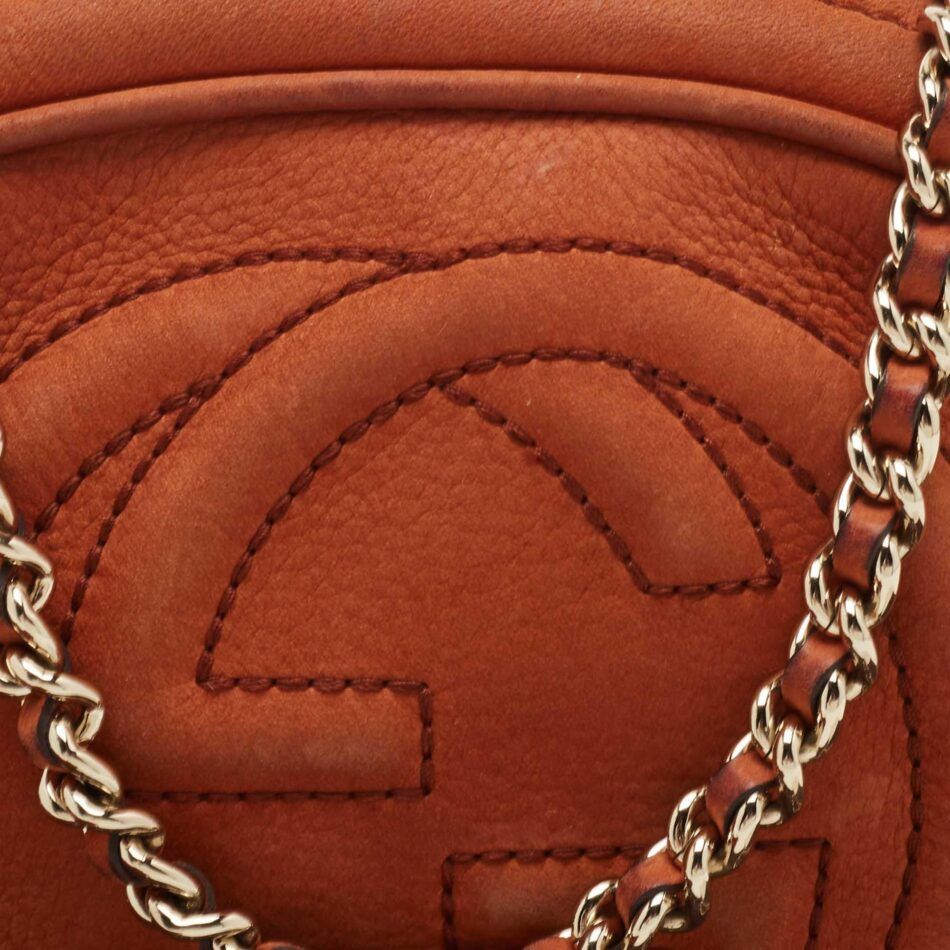
Every detail of Gucci bags displays premium craftsmanship, including the stitching. The thread color varies with the style: In some bags, the thread chosen for topstitched seams matches the bag’s leather or canvas; in others, it contrasts with the body material.
Whatever the hue, the stitching along the seams and edges, straps and handles should be perfectly straight, with exact spacing. If you see any gaps, fraying or breaks in the stitching, the bag is likely a fake.
QR Code
As part of its efforts to stymie counterfeits, Gucci introduced QR codes in 2016, allowing customers to verify a bag’s authenticity in seconds.
While this extra layer of security is available only for more recent bags and is not sufficient by itself to authenticate a bag, a Gucci bag made between 2016 and 2021 that does not have a QR code tag stitched into the lining should set off your internal alarm bells.
Know Your Gucci
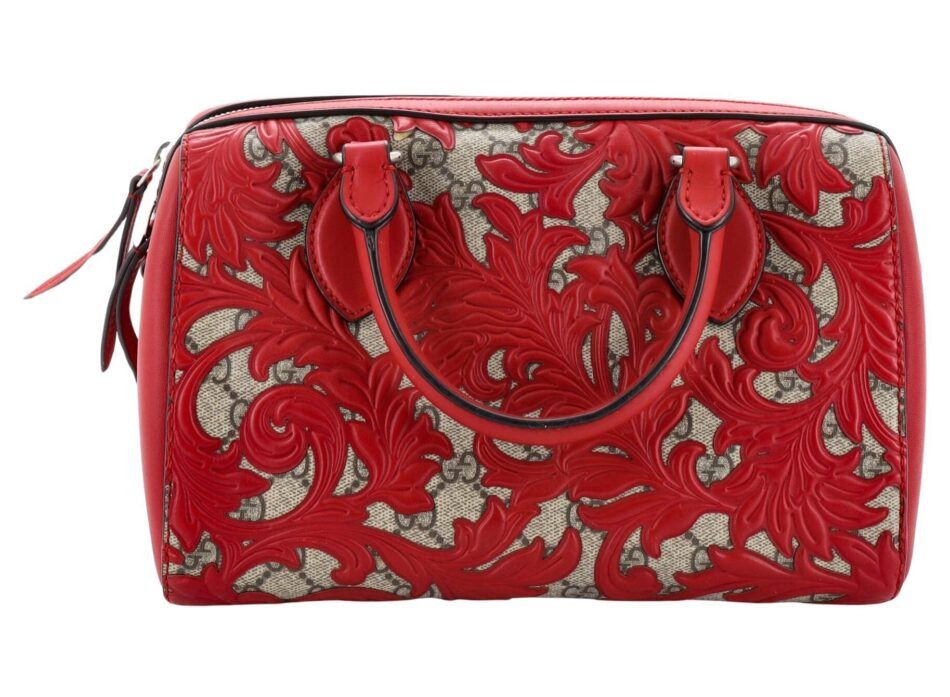
Gucci offers a bounty of styles. Spend time on the website or in a boutique familiarizing yourself with each and, importantly, with their distinctive details.
“You can find a really junkie one and think, ‘How could someone have said this was a Gucci!?’ ” says Rago, adding that, unfortunately, fakes are not always so obvious. The pros, he notes, look at everything from the stitching to “how the edges of the straps are folded or put together, as well as the length or width of the strap.” You should also check for penny-pinching tricks commonly used by counterfeiters. For example, “they’ll cheat and put hardware on one side only to save money.”
Given the decades of vintage Gucci bags available and the release in recent years of numerous instantly iconic styles, authenticating a potential purchase can be challenging. It is nonetheless essential. Counterfeiters have become increasingly skilled at replicating these luxury bags from logo to lining. Refer back to this guide anytime to spot the fakes and find the designer bag of your dreams.
